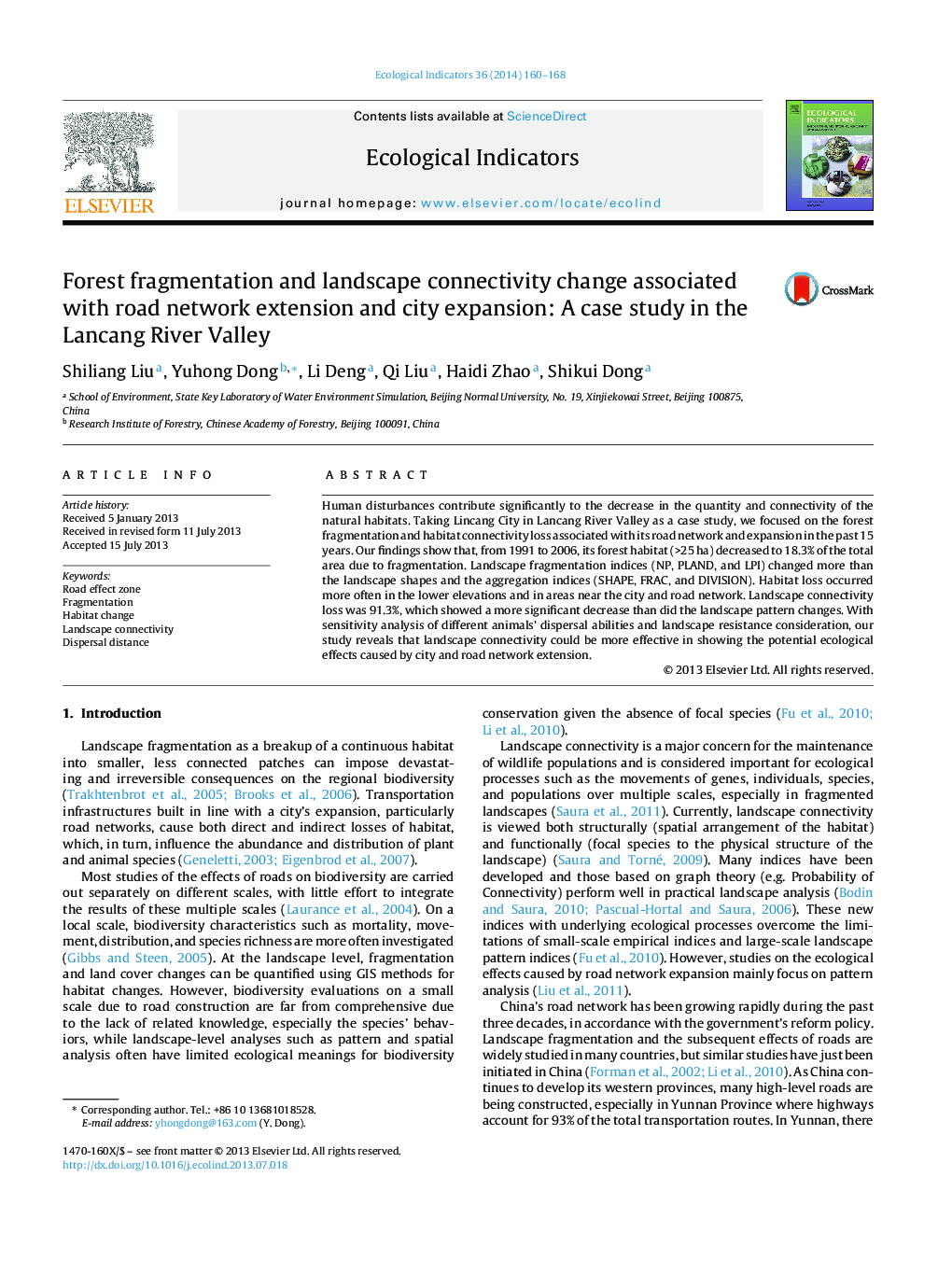| Article ID | Journal | Published Year | Pages | File Type |
|---|---|---|---|---|
| 4373306 | Ecological Indicators | 2014 | 9 Pages |
•Fragmentation indexes changed greater than shape and aggregation indexes.•Sensitivity analysis of different species dispersal abilities was compared.•Landscape connectivity loss was significant greater than pattern change.
Human disturbances contribute significantly to the decrease in the quantity and connectivity of the natural habitats. Taking Lincang City in Lancang River Valley as a case study, we focused on the forest fragmentation and habitat connectivity loss associated with its road network and expansion in the past 15 years. Our findings show that, from 1991 to 2006, its forest habitat (>25 ha) decreased to 18.3% of the total area due to fragmentation. Landscape fragmentation indices (NP, PLAND, and LPI) changed more than the landscape shapes and the aggregation indices (SHAPE, FRAC, and DIVISION). Habitat loss occurred more often in the lower elevations and in areas near the city and road network. Landscape connectivity loss was 91.3%, which showed a more significant decrease than did the landscape pattern changes. With sensitivity analysis of different animals’ dispersal abilities and landscape resistance consideration, our study reveals that landscape connectivity could be more effective in showing the potential ecological effects caused by city and road network extension.
Graphical abstractFigure optionsDownload full-size imageDownload as PowerPoint slide
